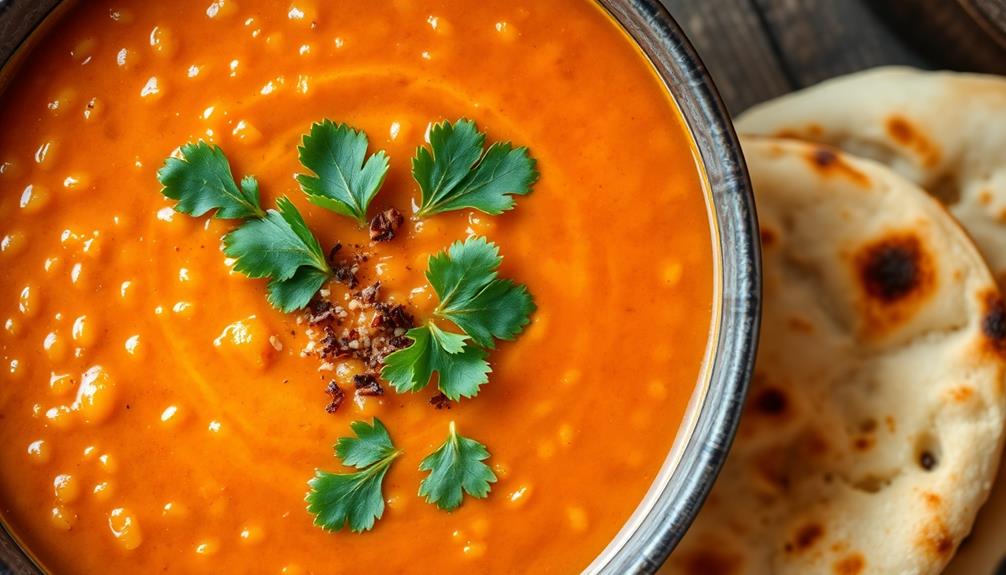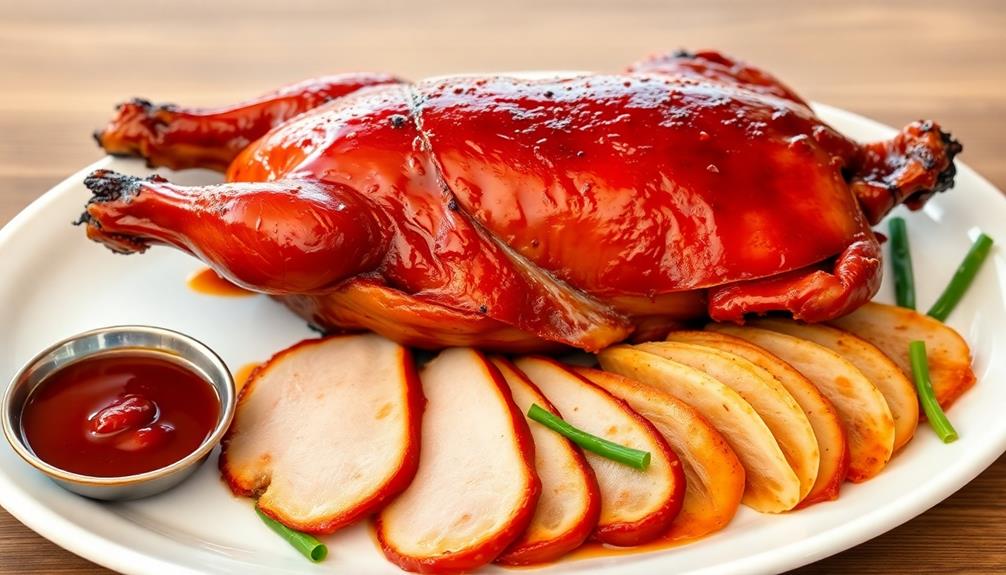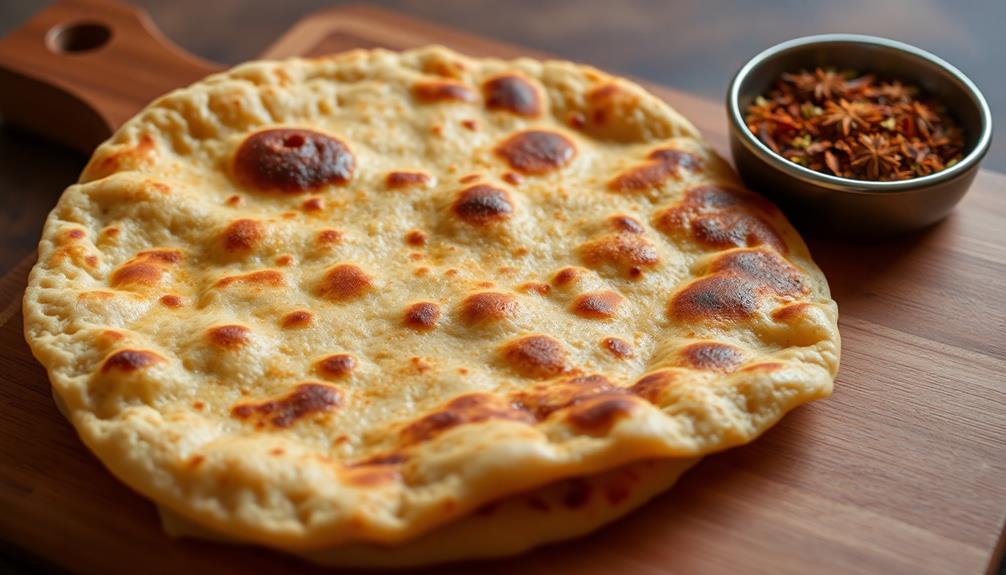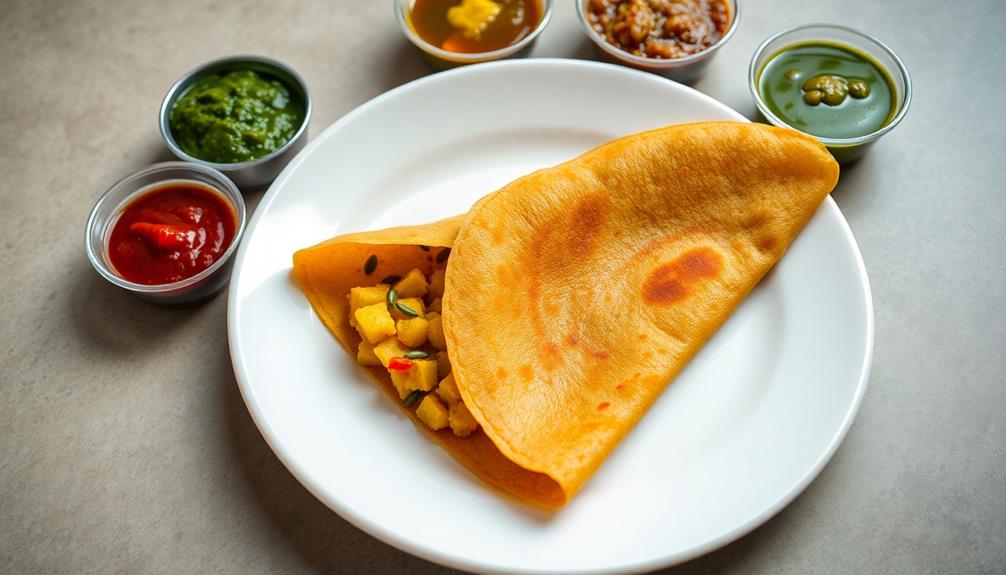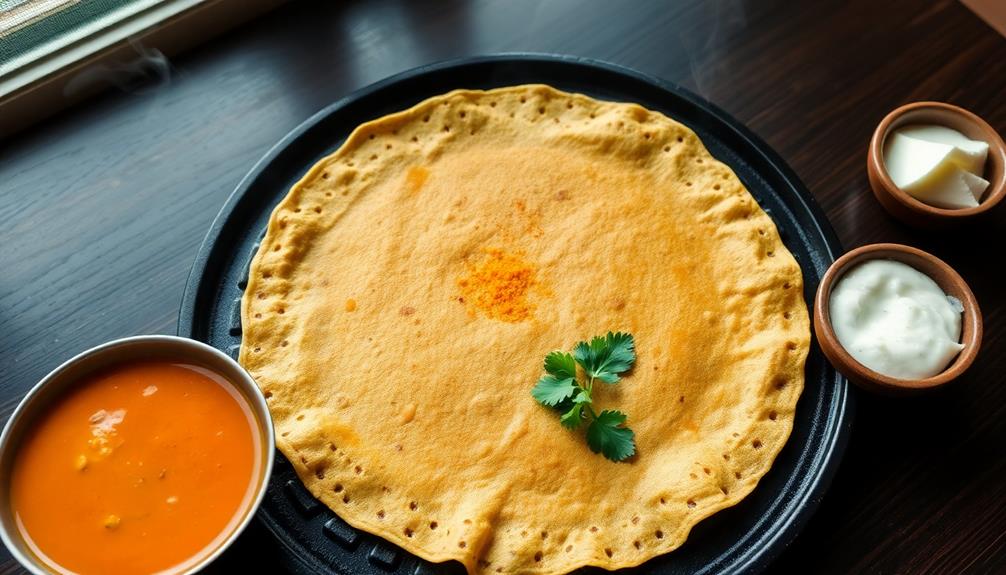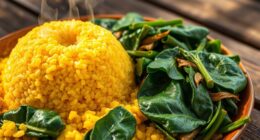Lentil soup, or dal, has captured the hearts and stomachs of people around the world for centuries! This nourishing dish has roots in ancient civilizations, offering a comforting and flavorful culinary experience. You'll love how easy it is to prepare, with simple ingredients like lentils, veggies, and spices that come together for a satisfying meal. The best part? Lentils are packed with protein, fiber, and essential nutrients, making this soup a healthy choice. Ready to dive in? Let's explore the delightful history, mouthwatering recipe, and step-by-step cooking process that'll have you savoring every spoonful.
Key Takeaways
- Lentil soup (dal) has a long history, tracing its origins to ancient civilizations and valued for its nutritional benefits and culinary versatility.
- Lentils are nutrient-dense, high in protein and fiber, and contain essential vitamins and minerals that support overall health.
- Common ingredients for lentil soup include lentils, onions, carrots, celery, garlic, spices, and broth, with customizable flavor profiles.
- Proper cooking techniques, such as soaking and simmering lentils, are crucial for enhancing texture and digestibility.
- Lentil soup is a comforting, nourishing dish that can be enjoyed as a standalone meal or accompanied by various breads or sides.
History
The origins of lentil soup trace back to ancient civilizations, where the humble lentil became a staple ingredient. You can find references to lentils in ancient Egyptian, Greek, and Roman texts, showcasing their enduring popularity. These tiny, lens-shaped legumes were prized for their nutritional value, ease of cultivation, and versatility in the kitchen.
Over the centuries, lentil soup has evolved across cultures, with each region developing its own unique spin on the classic dish. From the earthy, spice-infused dal of India to the hearty, herb-laden lentil soups of the Mediterranean, the variations are endless.
What ties them all together is the comforting, nourishing nature of this beloved soup.
Today, lentil soup continues to be a beloved dish, enjoyed by people around the world. Whether you prefer it thick and creamy or light and brothy, there's a lentil soup to suit every taste.
Recipe
Lentil soup is a hearty and comforting dish that's perfect for a chilly day. This recipe is easy to make and packed with flavor, making it a great option for a quick and satisfying meal.
Lentils are a nutrient-dense ingredient that are high in protein, fiber, and various vitamins and minerals. They're also incredibly versatile and work well in a variety of dishes. In this recipe, the lentils are simmered with aromatic vegetables and spices to create a delicious and nourishing soup.
- 1 cup brown or green lentils, rinsed
- 1 onion, diced
- 2 carrots, diced
- 2 celery stalks, diced
- 3 garlic cloves, minced
- 1 teaspoon ground cumin
- 1 teaspoon dried thyme
- 1/2 teaspoon smoked paprika
- 4 cups vegetable or chicken broth
- 1 (14.5 oz) can diced tomatoes
- Salt and black pepper to taste
- Chopped fresh parsley for garnish (optional)
In a large pot or Dutch oven, sauté the onion, carrots, and celery in a bit of olive oil over medium heat until softened, about 5-7 minutes.
Add the garlic and cook for an additional minute until fragrant. Stir in the lentils, cumin, thyme, and smoked paprika, and cook for 1-2 minutes to toast the spices.
Pour in the broth and diced tomatoes, and bring the mixture to a boil. Reduce the heat to low, cover, and simmer for 20-25 minutes, or until the lentils are tender.
Season with salt and black pepper to taste. Serve the lentil soup hot, garnished with chopped fresh parsley if desired. To add an extra kick to your meal, consider serving the lentil soup alongside a spicy Chicken 65 recipe. The bold flavors of the spicy chicken will complement the earthy richness of the lentil soup, creating a well-rounded and satisfying meal. Don’t forget to have some naan or rice on hand to soak up all the delicious flavors!
For best results, use fresh, high-quality ingredients and adjust the seasonings to your personal taste preferences.
You can also experiment with different herbs and spices to customize the flavor profile. Enjoy your delicious and wholesome lentil soup!
Cooking Steps
First, you'll want to rinse those lentils thoroughly under water to get them nice and clean.
Then, let them soak for about 30 minutes – this will help them cook up extra tender.
Once they're ready, just simmer the lentils until they're nice and soft.
Don't forget to add your favorite spices and herbs to really bring out the flavors!
Step 1. Rinse Lentils Thoroughly Under Water

Rinsing the lentils under cool running water is an essential first step in preparing this hearty soup.
You'll want to place the lentils in a mesh strainer and give them a good rinse, swishing them around to remove any dust or debris. Don't be afraid to really get in there and give them a thorough cleansing – you want to make sure those lentils are squeaky clean before they go into the pot.
Once they're rinsed, give the strainer a gentle shake to help remove any excess water. You don't need to pat them dry or anything – just get rid of the big drips.
Now your lentils are ready to go! Toss them into your pot and you can move on to the next step of the recipe. Rinsing only takes a minute, but it's an important part of making a delicious, wholesome lentil soup.
Get those lentils sparkling clean and you'll be well on your way to a comforting, flavorful meal.
Step 2. Soak Lentils for 30 Minutes
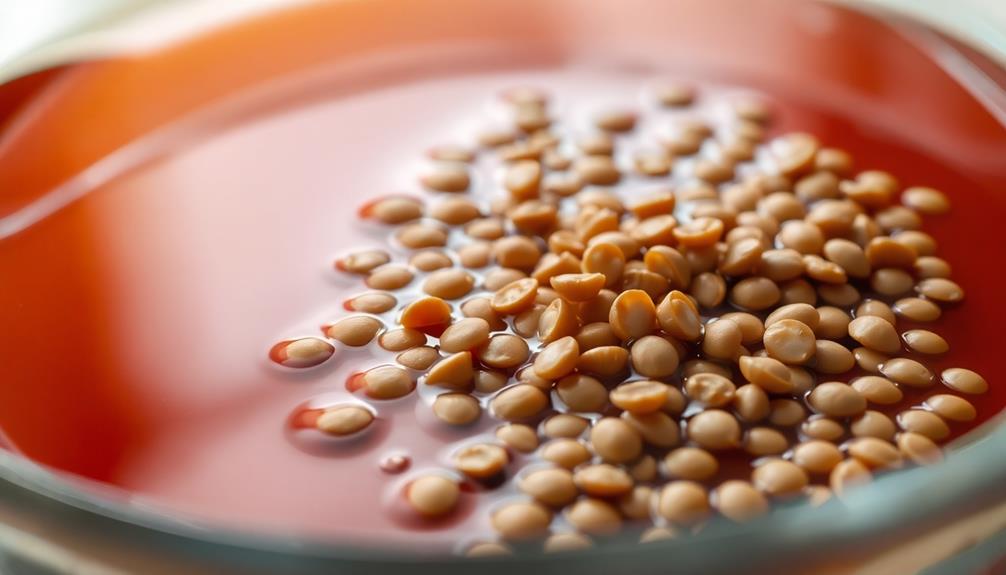
After rinsing the lentils, you'll want to let them soak for about 30 minutes. This extra step helps to soften the lentils and makes them easier to digest. Plus, it allows any remaining dirt or debris to float to the surface, so you can skim it off.
Just place the rinsed lentils in a bowl and cover them with fresh water. Set a timer for 30 minutes and let the lentils do their thing. You can even leave them to soak while you chop up the other ingredients for your soup.
When the timer goes off, you'll notice the lentils have plumped up and softened a bit. Drain them in a colander and you're ready to move on to the next step! Soaking is an important part of working with lentils, so don't skip this easy prep. It'll make your soup turn out even better.
Step 3. Simmer Lentils Until Tender
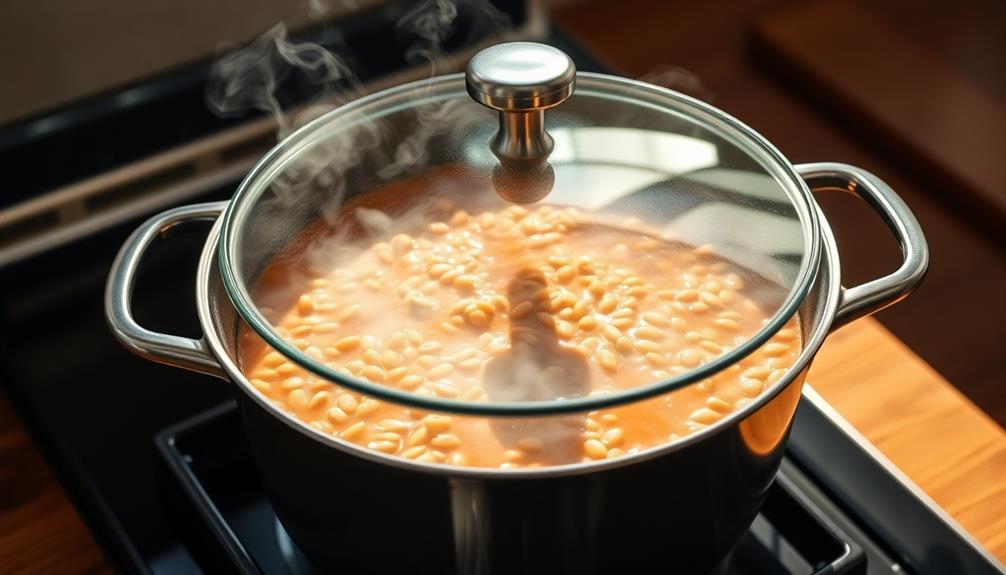
With the lentils soaked and drained, you can now start cooking them. In a large pot, add the soaked lentils and cover them with fresh water. Bring the pot to a boil over medium-high heat.
Once it's boiling, reduce the heat to low and let the lentils simmer gently. As the lentils cook, you'll want to give them a stir occasionally to prevent them from sticking to the bottom of the pot.
Simmer the lentils for about 15-20 minutes, or until they've become nice and tender. Keep an eye on the pot and add more water if the lentils start to look dry. You want them to stay submerged in liquid the whole time.
When the lentils are perfectly tender, you can move on to the next step of your lentil soup recipe. The soft, cooked lentils will be the foundation for all the delicious flavors to come.
Get ready to season and customize your soup to perfection!
Step 4. Add Spices and Herbs

Now that your lentils are simmered to perfection, it's time to start seasoning them. You'll want to add a variety of aromatic spices and fresh herbs to bring out the best flavors in your lentil soup.
Begin by adding ground cumin, coriander, and turmeric. These warm spices will give your soup a lovely earthy and fragrant foundation. Additionally, consider incorporating a few drops of essential oils like lemon or peppermint, which can enhance the overall aroma and provide a subtle flavor twist, unlocking aromatic cleaning power in your culinary creations.
Next, toss in some crushed garlic and grated ginger for a pungent punch of flavor. Don't forget the fresh herbs! Chopped cilantro, parsley, or mint will brighten up the dish and add a burst of freshness.
Stir in a touch of salt and pepper to taste. Keep tasting and adjusting the seasonings until the flavors are perfectly balanced. With the right blend of spices and herbs, your lentil soup is going to be utterly delicious.
Get ready for your kitchen to be filled with the most mouthwatering aromas!
Step 5. Garnish With Cilantro Before Serving
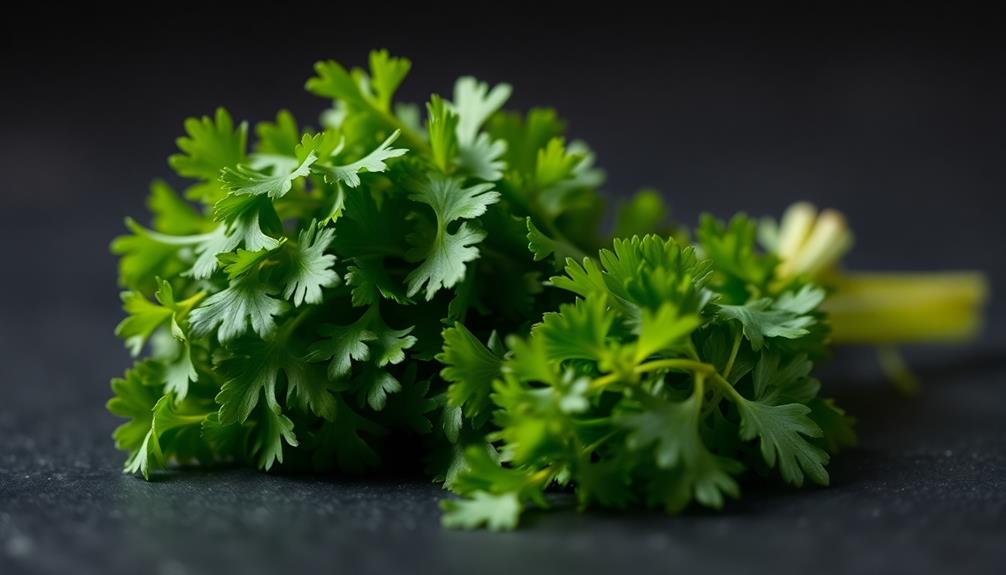
Top off your lentil soup with a vibrant garnish of fresh cilantro. This fragrant herb adds a bright, zesty flavor that complements the rich, earthy tones of the lentils.
Simply pluck a few sprigs of cilantro from the stem, giving them a gentle rinse if needed, and sprinkle them over the top of your steaming hot soup. The delicate leaves will add a lovely pop of green color and an aromatic finish that'll have your taste buds dancing.
Don't be shy with the cilantro – a generous handful makes all the difference. Gently stir it in, allowing the flavors to meld.
The cool, herbal notes of the cilantro will balance out the heartiness of the lentils, creating a harmonious blend in every spoonful. Garnishing with cilantro is the perfect way to elevate your homemade lentil soup and impress your family and friends with your culinary skills.
Final Thoughts
Lentil soup is a nourishing and versatile dish that can be enjoyed year-round. The finishing touches, like garnishing with fresh cilantro, really make this soup shine. But your work doesn't end there!
Take a moment to savor the aroma and vibrant colors of your homemade lentil soup. Isn't it just wonderful? You've put in the effort, and now it's time to sit back, relax, and enjoy the fruits of your labor.
Don't be afraid to experiment with different garnishes or accompaniments. A sprinkle of toasted coconut, a squeeze of lemon, or a dollop of yogurt can all add extra flavor and texture.
This soup is endlessly customizable, so have fun trying new things. Most importantly, remember to share your creation with loved ones.
Lentil soup is best enjoyed when shared around the table, with good conversation and even better company. So ladle up a steaming bowl, and prepare to savor every last spoonful.
Frequently Asked Questions
Can I Use Other Types of Lentils in This Recipe?
Absolutely! You can use other types of lentils in this recipe.
Lentils come in a variety of colors and sizes, and each one has its own unique flavor. Feel free to experiment with green, red, yellow, or even black lentils – they'll all work great.
Just keep in mind that different lentils may have slightly different cooking times, so you may need to adjust the recipe accordingly.
Have fun exploring the possibilities!
How Can I Make This Soup More Flavorful?
To make your soup more flavorful, you can try a few simple tricks!
First, try adding some aromatic spices like cumin, coriander, or ginger. These will give your soup a wonderful depth of flavor.
You can also sauté some onions, garlic, or even chili peppers before adding them to the pot.
Don't be afraid to experiment with different herbs and seasonings to find the perfect flavor balance for your taste buds.
With a little creativity, you can turn a basic soup into something truly extraordinary!
Can I Freeze Leftover Lentil Soup?
You absolutely can freeze leftover lentil soup!
It's a fantastic way to enjoy that tasty dish again later on. Just let the soup cool completely, then transfer it to an airtight container or freezer-safe bag.
When you're ready to reheat, simply thaw it in the fridge overnight and warm it up on the stovetop or in the microwave.
Frozen lentil soup will stay fresh for up to 3 months, so you can savor that delicious flavor anytime!
Is Lentil Soup Healthy?
Yes, lentil soup is incredibly healthy!
It's packed with protein, fiber, and essential vitamins and minerals. Lentils are a great source of iron, folate, and potassium, which are all important for keeping your body strong and energized.
Plus, the vegetables and spices in lentil soup add even more nutritional benefits.
What Can I Serve With Lentil Soup?
Serving up lentil soup? You've got lots of great options!
Try pairing it with some warm, freshly baked bread – it's the perfect companion. Or, whip up a crisp salad on the side for a healthy balance.
Don't forget some tasty toppings like a dollop of yogurt, some chopped onions, or a sprinkle of fresh herbs.
Get creative and have fun with it – the possibilities are endless when it comes to enjoying a comforting bowl of lentil soup!
